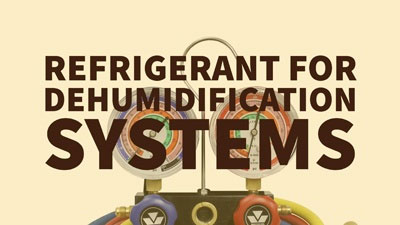DCA, like all other refrigerant-based equipment manufacturers, moved away from potentially ozone-depleting refrigerants years ago for various reasons. DCA now uses two refrigerants, R-407C and R-410A, each with technical and thermodynamic advantages to consider.
R-410A Refrigerant
R-410A refrigerant doesn’t have the advantages or disadvantages of significant temperature glide compared to R-407C. Today, R-410A is gradually becoming the industry standard refrigerant in dehumidification, while R-407C is becoming less preferred. Typical service trucks will more likely have a supply of R-410A on board for service work versus other refrigerants. In a system with R-410A, the refrigeration pressures likely to occur will be much higher that R-407C-based equipment, requiring much heavier construction but smaller diameter piping sizes. R-410A condensers, both internal and remote, are more efficient and thus smaller and less costly than R-407C condensers.
R-407C Refrigerant
R-407C refrigerant has an inherent substantial temperature glide characteristic – glide being the change in temperature as the refrigerant evaporates and condenses. R-407C offers slightly improved moisture removal (lower sensible heat ratio) at the evaporator coil, which is a benefit for dehumidification. It also has the advantage of operating at pressures similar to R-22 which it replaced. However, R-407C’s glide requires significant de-rating of the condensers, requiring larger internal or remote condensers, which can be a disadvantage compared to R-22 or R-410A refrigerants.
DCA offers dehumidification systems for both R-410A and R-407C refrigerants. Contact us to learn more.
Topics: Dehumidifiers






